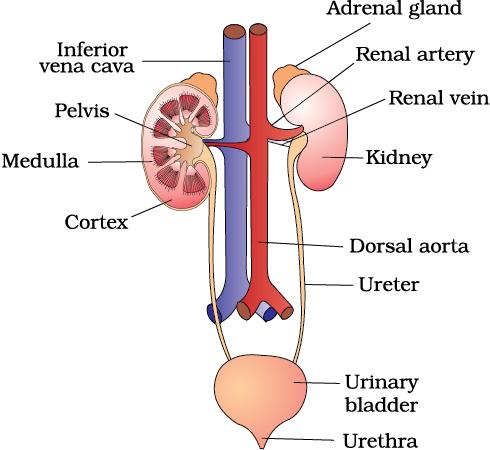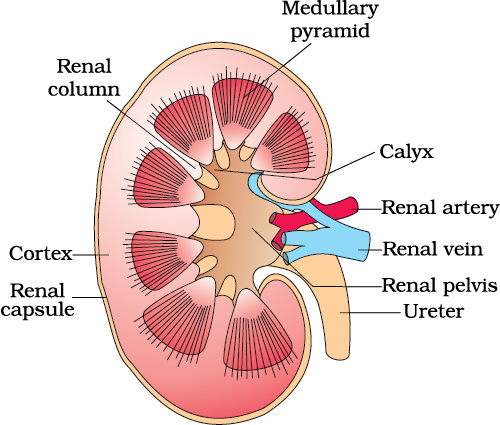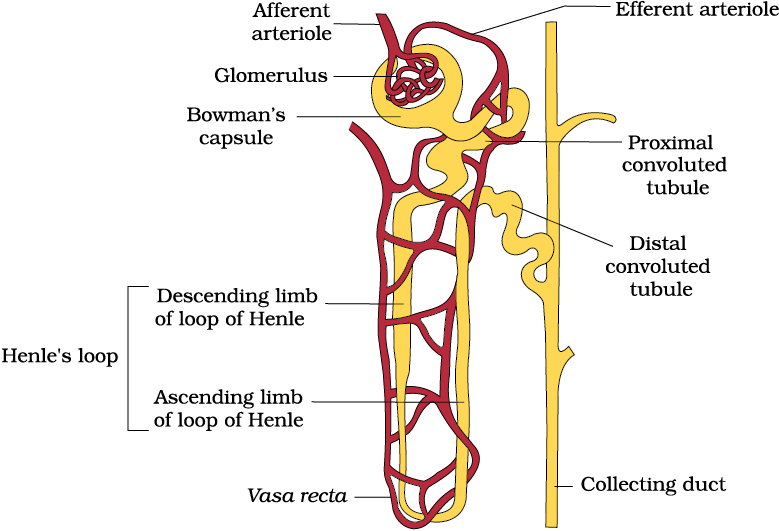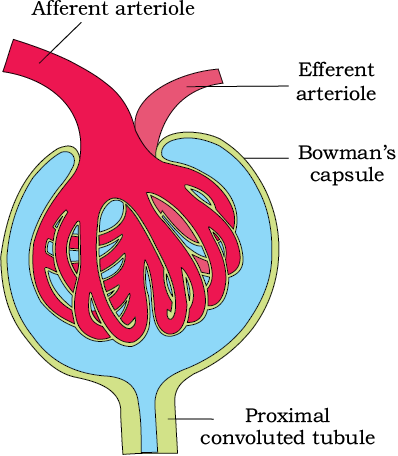In humans, the excretory system consists of a pair of kidneys, one pair of ureters, a urinary bladder and a urethra (Figure 19.1). Kidneys are reddish brown, bean shaped structures situated between the levels of last thoracic and third lumbar vertebra close to the dorsal inner wall of the abdominal cavity.

Figure 19.1 Human Urinary system
Each kidney of an adult human measures 10-12 cm in length, 5-7 cm in width, 2-3 cm in thickness with an average weight of 120-170 g. Towards the centre of the inner concave surface of the kidney is a notch called hilum through which ureter, blood vessels and nerves enter. Inner to the hilum is a broad funnel shaped space called the renal pelvis with projections called calyces. The outer layer of kidney is a tough capsule. Inside the kidney, there are two zones, an outer cortex and an inner medulla. The medulla is divided into a few conical masses (medullary pyramids) projecting into the calyces (sing.: calyx). The cortex extends in between the medullary pyramids as renal columns called Columns of Bertini (Figure 19.2).

Each kidney has nearly one million complex tubular structures called nephrons (Figure 19.3), which are the functional units. Each nephron has two parts – the glomerulus and the renal tubule. Glomerulus is a tuft of capillaries formed by the afferent arteriole – a fine branch of renal artery. Blood from the glomerulus is carried away by an efferent arteriole.

The Malpighian corpuscle, PCT and DCT of the nephron are situated in the cortical region of the kidney whereas the loop of Henle dips into the medulla. In majority of nephrons, the loop of Henle is too short and extends only very little into the medulla. Such nephrons are called cortical nephrons. In some of the nephrons, the loop of Henle is very long and runs deep into the medulla. These nephrons are called juxta medullary nephrons.

The efferent arteriole emerging from the glomerulus forms a fine capillary network around the renal tubule called the peritubular capillaries. A minute vessel of this network runs parallel to the Henle’s loop forming a ‘U’ shaped vasa recta. Vasa recta is absent or highly reduced in cortical nephrons.